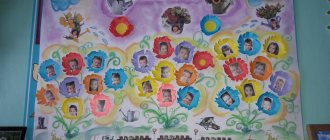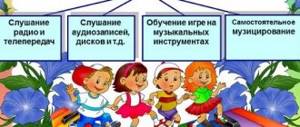- home
- Speech development
Speech development is the most important process for every child. Its features determine not only the ability to express one’s thoughts, but also the ability to communicate effectively with others and influence the success of learning at school. This is why it is so important to conduct speech therapy sessions with children five to six years old. It’s good if parents not only use the help of specialists, but can also independently organize classes with their child at home.
Typical speech disorders in children 5-6 years old
Most older preschoolers have difficulties with:
- mastering sonorous and hissing sounds;
- sound analysis of words;
- development of narrative speech;
- writing a story and descriptions.
Of course, such problems can be minor, only slightly different from the age norm, or serious, up to and including general speech underdevelopment (GSD). It is necessary to contact a speech therapist in any case, but the supportive work of parents at home is also very important.
It is worth noting that regular speech therapy exercises and classes for children 5-6 years old are useful for every child at home, because they help to master literacy faster.
Rules for speech therapy classes at home
The success of home lessons depends not only on the availability of the necessary aids and a work plan agreed upon with the speech therapist. The organization of classes itself is very important. Here are a few simple rules that will help you achieve excellent results:
- All speech therapy exercises for children should be carried out regularly, but a little at a time. You shouldn’t try to do articulation gymnastics, play speech games, or fill out a workbook right away. It is better to devote a few minutes to each type of exercise, rather than having a whole “speech therapy day.”
- Do not force them to complete tasks under pressure; educational activities for children should resemble a game. Come up with a simple plot (for example, a journey into the universe of sounds), prepare small prizes (stickers, paper stars), and arrange physical exercises.
- Praise and support the little student if he makes even the slightest progress. Focus on achievements, even small ones, gradually progress will become more and more obvious.
- Find good workbooks for home practice. They should not only be professional in content, but also bright, colorful, and exciting. It is ideal if the tasks have interactive elements (the opportunity to add something, draw something). Such material makes it possible to interest a preschooler and clearly shows him the “path traveled” and success.
- Don't expect instant results, be patient and gentle perseverance. The process of setting, consolidating, and differentiating sounds is complex; it takes months even for experienced speech therapists. Follow the plan and the results will gradually appear.
Interaction between speech therapist and parents
A friendly atmosphere should reign in any logo center. Situations where parents make complaints to the speech therapist in front of their child, or parents are given a poor assessment of their independent work in the presence of the patient, are unacceptable. If this happens at least once, you can stop the classes immediately, because they will not give results. Only friendly communication and tactful discussion of difficult moments will create a healthy atmosphere for the treatment of a non-speaking or incorrectly speaking child.
How to correct a child’s speech without a speech therapist
To work independently at home, it is wise to find an educational website, register on it, after which a lot of useful literature will become available, the use of which will help in solving many issues. It is wise to fill home lessons with homemade devices, for example, create your own book from felt, and play with it with your child, developing motor skills and horizons.
Felt book
Speech therapy sanatoriums for children with parents
When a child has a severe form of illness that prevents the full development of speech, or in situations where parents want to be closely involved with their children, the question of useful rest arises. In our country there are enough speech therapy sanatoriums for children with their parents, where children are not separated from their families and receive qualified help from professionals in a comfortable, healthy environment.
It is important to remember that a child’s healthy and beautiful speech can successfully develop on its own if the baby lives in a healthy environment at home. You always need to start with yourself, evaluate the manner of pronunciation, intonation and speed of speech when searching for the cause of disorders in a preschooler.
Speech therapy exercises for practicing at home
All speech therapy exercises can be divided into three large blocks, each of which needs to be given attention and carried out regularly:
Development of phonemic hearing
The ability to distinguish sounds by ear seems natural, but if you ask your preschooler to spell a word, you will see gaps.
For children 5-6 years old, there are a large number of special games and exercises that help develop phonemic hearing. These include:
- selection of words starting or ending with a given sound;
- counting sounds in a word, determining the syllable structure;
- drawing up a sound diagram of a word;
- inventing rhymes and short poems;
- pronouncing speeches and tongue twisters.
Thoughtful speech therapy classes for children 5-6 years old make it possible to make all the sounds of their native language obedient and easy.
Finger gymnastics
Fine motor skills of the hands help speech activity, so older preschoolers must do it without fail.
Of course, for children 5-6 years old, the exercises should be complex, with a script, in verse. It is useful to select sets of exercises for both hands at the same time, synchronous. Don't forget to use "helpers":
- small massagers (rubber balls, rollers, cones);
- scissors for cutting;
- plasticine;
- origami paper.
Also remember that all types of needlework, construction, and any creativity are great ways to improve fine motor skills outside of individual lessons.
Articulation gymnastics
Special language exercises must be performed every day if there are any problems with pronunciation. For home exercises, it is best to choose a set of exercises with a poetic description and pictures.
Do a tongue warm-up every day, always in front of a mirror (this allows the baby to observe the process himself, assessing its success). If you have problems with one or two sounds, then articulatory gymnastics should be selected for them. These can be found in thematic workbooks on speech therapy.
Speech therapy tasks
Starting with the letter R
One of the most difficult sounds to master is R. Many preschoolers learn to roar loudly by the very end of kindergarten. If the production of the sound P is already behind you, then special exercises will help speed up its automation:
1. “Like a little motor”
We ask the child to pronounce the sound R in the word for a long time, drawlingly (like a motor growls).
2. “Where is R hiding?” (in pictures and words)
Offer to choose pictures with images of objects with a given sound or clap your hands if he hears such a word.
3. “How can you growl?”
Show your child pictures of objects that have the sound r in their names. Offer to read and color the picture.
4. “Sounding tracks”
Together with your child, come up with several chants made up of several syllables:
Ra-ra-ra - they ran away from the yard.
Ro-ro-ro - and they found a bucket.
Ru-ru-ru - we came up with a game.
5. “Substitute a syllable”
The adult offers the child words that end or begin with a syllable with P (ra, ro, ry), the child must choose the correct option and pronounce it correctly.
6. “Look and name”
An adult asks the child to read words with the letter r from the pictures. The word must be said as many times as there are stars next to each picture.
7. “Poems, tongue twisters, riddles”
Learn with your child several poems and riddles in which words with R appear.
The necessary tasks for speech development can be found in the Workbook for the sound R, compiled by Kostyuk A.V.
Download, print the tasks in pictures and study at home:
Speech therapy tasks for the letter P
Starting with the letter L
The hard sound L is also often difficult for children 5-6 years old. If the baby has already learned to pronounce it alone, in isolation, then it’s time to start working on automation in speech. The following exercises are suitable for this:
1. “Say it nicely”
Offer your child several images of words starting with L. Ask him to pronounce the words beautifully, emphasizing the desired sound with his voice.
2. “Toys for Larisa”
Ask your child to collect gifts for the Larisa doll. Tell her that she only likes things that begin with L. For this exercise, you need to select small objects or pictures in advance; all words should not begin only with L.
3. “One-many”
Invite your child to name words with L in the singular and plural. In the workbook for the sound L (author Kostyuk A.V.) there is a whole table with pictures for this exercise (lesson 20).
4. “Find the Sound”
Invite your child to draw up a diagram of the word and mark the place L on it. If it is still difficult for your child to independently determine the number of sounds, then first you can do several similar exercises from the workbook.
5. “Tongue twisters and nursery rhymes”
Use nursery rhymes, tongue twisters and poems with words that contain L.
Download and print tasks in pictures starting with the letter L:
Speech therapy tasks for the letter L
Speech therapy consultations for parents in kindergarten
Speech therapy consultations prepared for parents are carried out regularly in kindergarten in order to teach adults to communicate with children. The vast majority of mothers and fathers do not know how to construct sentences and talk with a child so that he understands the meaning of what was said and strives to answer.
Lesson with a specialist
Speech therapy manuals for parents to study
Speech therapy manuals for preschoolers make up a whole library of useful and simple exercises, classes in which will help parents understand their mistakes in communicating with children and guide them on the right path for the development of their preschooler.
Album of exercises for children with speech disorders
Using an album for speech development helps parents navigate when planning independent exercises. On the pages of such manuals there are interesting pictures that can attract children's curiosity and turn activities into games. Under the pictures for parents there are descriptions of the exercise corresponding to each picture. For example, for the image of a balloon, you can find the following description: “Put your palms folded together smoothly in different directions, accompanied by a long sound “sh-sh-sh”.
Such albums offer exercises for training speech breathing, thanks to which it will be possible to deliver a clear, slow pronunciation that will not turn into stuttering due to the fast pace.
Exercises from the album
Interesting! Other author's albums are focused on the development of phonemic awareness. Classes in this manual teach you to distinguish oppositional sounds: both in someone else’s speech and in your own pronunciation. Much attention is paid to pairs of hard and soft sounds, as well as deaf and voiced.
Album of game exercises for speech development
Game albums contain speech therapy materials, work on which improves articulation and teaches adults to carry out simple exercises with children at home to train control of the speech apparatus. Illustrations showing lip position for each sound engage babies, encouraging them to repeat.
Learning to write poems and riddles
Introducing riddles opens up a new world for preschoolers. Obvious information presented in the form of a riddle is extremely exciting for kids. It is best to start familiarizing yourself with understandable material - with a description of animals, their habitats and the sounds they make. During such exercises, parents are recommended to use cards with illustrations of popular animals.
They are easy to find on the Internet and print out for training. The animal is first described to the child, for example, like this: “He is big, shaggy, lives in the forest, loves to eat raspberries and honey, and sleeps in a den for the winter.” If the child finds it difficult to answer, show a picture of a bear. After several games, adults invite the child to choose a card and describe the animal.
Familiarity with rhyme is extremely valuable for children with speech disorders, incorrect breathing patterns, and also with stuttering. Listening daily to quatrains with a simple rhythm, the text is involuntarily remembered and a sense of tact is developed. A two-year-old child is able to repeat the endings of the lines of works familiar to him. Older children can already learn to write their own rhymes together with their parents. This is especially successful during a long walk, when the rhythm of speech coincides with each step.
Examples of analysis of educational activities for speech development in preschool educational institutions
Important! Specialized speech therapy manuals contain a description of the technology for teaching poetry, offer examples of lines with the correct rhythm that is easily perceived by the child, and also contain many unfinished quatrains that the child can finish himself.
Poem as medicine




